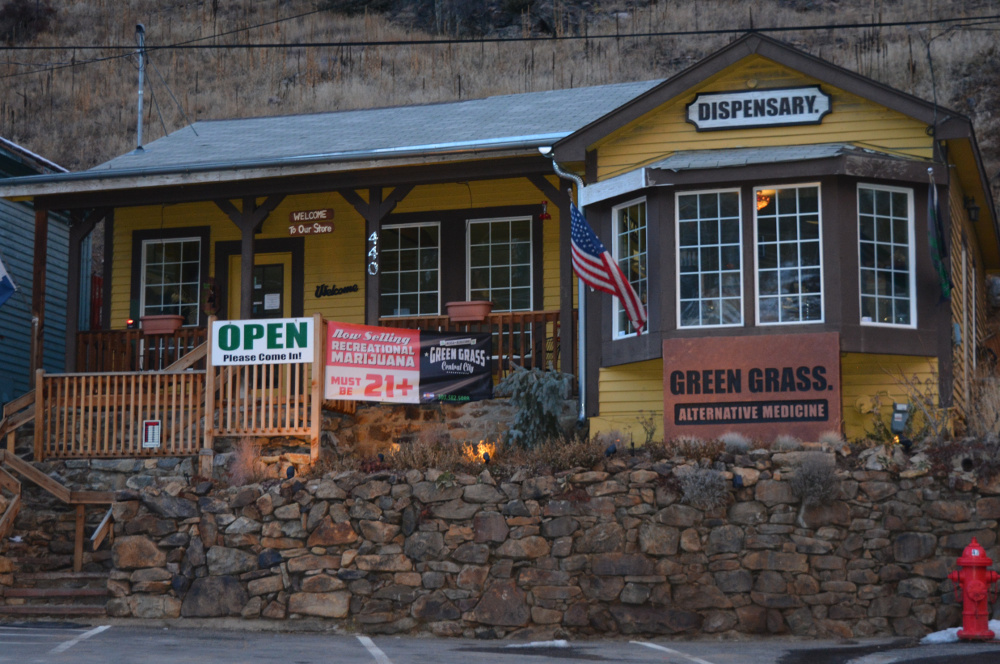 
| ||
|
|
|
BLACKHAWK, CO TRIP REPORT - Part 3
by Zengrifter
Zengrifter has been counting since the 70s, having played several counts. His story is found in ‘The Zengrifter Interview,' an abbreviated version was published in 2003 in Blackjack Insider and the full unexpurgated version at Ken Smith's BlackjackInfo.com. He has also figured prominently in many of the Barfarkel trip reports (
www.youvegotheat.com), as well as articles and citations by Nathan Tilton, Dan Pronovost, Frank Scoblete and others relating to his unique card counting tactics, including his consolidation betting often referred to as ‘Grifter's Gambit.'Note: Part 1 of Zengrifter's trip report appeared in BJI issue #180 and Part 2 in #181.
My first two Blackhawk trip reports to Black Hawk generated a number of comments and questions via phone, email, and discussion boards. I felt (and Henry Tamburin concurred) that it would be helpful to BJI readers to review the comments I received prior to my final wind-up of my trips into the Colorado-mountain casinos.
*****************
From Creeping Panther:
I see you are still the master of the game - very entertaining and I take it you are long gone from that area, thus your narrative about the conquest. Had I been there, I would have played nothing but the shuffle-tracking game, and your chance of being flyered would have been greatly reduced, and your EV would have been off the chart.
Yes. That hand shuffled 6D game was the single best opportunity I encountered; and amazingly, that it was my very first table. Unfortunately, it was rarely open. As for my narrative - I actually miss-identified the location in Blackhawk so as not to overly expose it.
*****************
From DDutton:
How about a picture of what Black Hawk looks like, ZG?
Below is a photo of Blackhawk, with Ameristar rising, taken four years ago. The Ameristar is the 'Mirage' of that area.

*****************
From Automatic Monkey:
Great report! I see Colorado now has EVERYTHING you need ZG!
Ha ha - Here's a photo of that sole cannabis shop in.

*****************
From Katz:
What was your expectation when you played at Blackhawk? For all three sessions you seem to have been "lucky." Please give us more on this 'luck' factor.
Based on the number of hands, net-effective spread, and rules, I would estimate that my EV for those first four sessions was maybe $700. Therefore I was just as likely to lose $1400 as win $2800 (I think).
As for the double-deck games, my overall spread ranged from 0 to three hands of $100, and I roughly calculate my net-effective spread to be about 1-10.
*****************
From Blitzkrieg:
You mentioned that Sal only pulled out $500 starting but he was betting hands of $100 to where he would possibly be spreading out to three hands. What was the overall bankroll for the Gorilla BP? $500 seems a bit underfunded as far as a buy-in goes if a player is going to be spreading out to three hands of $100 if things didn't go your way up front. A cash-in like that will probably be under the radar of the casino but it still seems short to me. What card counting system was Sal using and did you orchestrate what he would bet and do at all times?
We were playing to a $30,000 BR. I estimate that our ‘bet2bank calibration' put us at about 0.60 Kelly and an overall RoR (Risk of Ruin) of about 5%.
One of the things I like to do is make relatively small buy-ins because this enhances the appearance that I'm just taking a shot. Additionally, if I lose multiple small buy-ins, it gives the appearance that I'm steaming.
At the Reserve play, we actually made two $500 buy-ins and Sal looked pretty lucky.
*****************
From Zenzan:
Do you ever play the game of BJ while inebriated (either drunk or stoned)? More so, can you play the game of BJ while inebriated and still maintain a high level of play?
Never "drunk" per se, but I will drink Malibu rocks on infrequent occasions when I want to appear inebriated. As for "stoned," I've been using cannabis for decades, but I do not regularly play when on it.
*****************
From Katz:
How many BJ joints are worth playing in Blackhawk? What does that translate into number of tables available?
Nine joints and around thirty tables are playable (by counters' standards).
*****************
Blitzkrieg
The cut-off tracking (COT) technique has me interested. If a player finds a game where the dealers are doing a single pass on the shuffle and their playing a 6D game and let's say that the counter ends up with a +10 count, would the person getting the cut card want to cut to the cards that didn't come into play, know that a rich portion of the deck could come into play starting a new shoe? Is that the logic behind COT? What if the ending count was a -10 or higher after the cut card gets dealt out while using the COT technique?
- Some two-pass shuffles also lend to COT.
- The key is that the cut-offs behind the shuffle card remain intact to the shuffle (i.e., not broken up)
- We don't care if the ending shoe count at shuffle-card is plus, minus, or neutral.
Here are some references on COT:
COT from
Did you ever get into shuffle- tracking?
"I do use the simpler forms, mostly thanks to Mason Malmuth's Blackjack Essays which contains three chapters on the simplest form of shuffle-tracking, which is called ‘cutoff tracking.'
"Cut-off tracking in shoe games is relatively easy to do. The hard part is finding games with shuffle procedures that leave the cut-offs - the undealt cards left behind the shuffle card - in a relative ‘cohesion-dilute' and exploitable as such. Such games are few and far between, but they are out there, once you know what to look for. Last year I noticed close to a dozen or so games between
Southern California and Southern Nevada that was exploitable with variants of the relatively simple cut-off tracking method.
Once you know how to recognize a shuffle that leaves the cut-offs in a proximate but diluted cohesiveness, all that is required is to secure the cut card, and proceed to cut those cards to either the top or the bottom of the post-shuffled stack - then you make a simple count conversion - the result being that an otherwise mediocre six- or eight-deck game with poor penetration is instantly
transformed into a three or five deck game with 90% penetration and a starting plus count two thirds of the time!
Summary of Cut-off Tracking by Sonny from BJINFO Knowledge Base -
Cut-off tracking consists of retaining the count at the end of the shoe (after the final round has been played and the cards are about to be shuffled). Assuming a balanced count is employed, the remaining unseen cards (hereafter referred to as the "cut-off slug") must therefore have a value that is equal to the running count but with the sign reversed. For example, if the running count is -7 at the end of the shoe, then the cut-off slug contains cards that will sum to +7 in order to assure a zero final count. That means the cut-off slug is made up of mostly low cards which are bad for the player.
The next step in tracking the shuffle is calculating the "average count density" of the used cards in the discard tray (hereafter "discards"). In the above example, assuming a six-deck game with five dealt, you would figure that the discarded 5 decks with a count of -7 would average a count of -7 / 5 = -1.4 per deck. If we then shuffle our cut-off slug with one of the discard decks, we would estimate a count of 7 - 1.4 = 5.6 for the new two-deck shuffled slug. We could then cut these cards to the bottom of the shoe, adjust our starting running count, and play with a significant advantage in a four-deck game. We are essentially using the cut card to "short the deck" of cards we don't want. Similarly, this method can also be used to cut good cards do the top of the shoe.
*****************
From Blitzkrieg:
I have never heard much about COT, or looked at COT in a 6D game in that manner because I don't play 6D that often. Something to really consider that I can see would be how the dealer plugs the unused cards back into the decks, or are they just placing ALL the unused cards on top or bottom of the decks in the discard tray. It seems like there could be a lot potential with such tracking like at the beginning of a new 6D shoe... where maybe a counter gets a high negative count within 1-1.5 decks and he/she could remember the placement of that rich zone, then using the information (the count) at the end when the cut card comes out. If a 6D shoe ended on a moderately high positive count with the player remembering the zone of rich cards ...
Yes, but not remembering their location; instead, manually cutting them to the top or bottom of the pack.
Next month Zengrifter will conclude his trip report to Blackhawk and reveal how well he did overall in his first visits to the Colorado mining town casinos.
|
|
©2015, DeepNet Technologies. No material to be copied without express permission of DeepNet Technologies.
This site developed by
DeepNet Technologies, Ontario, Canada. Contact webmaster @ bjinsider . com
if you have problems.
This site is best viewed in a 800x600 graphics mode, or higher.
